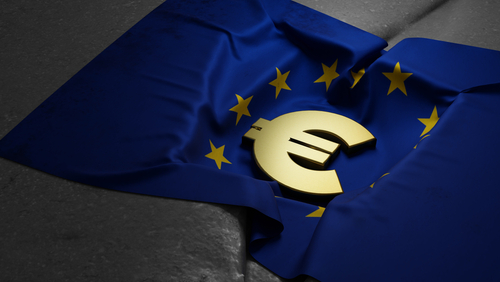
Europe | Monetary Policy & Inflation

Europe | Monetary Policy & Inflation
This article is only available to Macro Hive subscribers. Sign-up to receive world-class macro analysis with a daily curated newsletter, podcast, original content from award-winning researchers, cross market strategy, equity insights, trade ideas, crypto flow frameworks, academic paper summaries, explanation and analysis of market-moving events, community investor chat room, and more.
We recently introduced our ‘pre-mortem’ series. It is a framing device that assumes a future outcome then works backwards to assess how this came to be, and it is useful for exploring risk events that are otherwise rarely given due attention.
Previously, we have looked at how EUR/USD may fall to 0.80, and how US inflation may rise to 15%. Now, I take the same framework to consider a new scenario: Eurozone inflation remains stubbornly above 2% out to the end of its forecast horizon.
Despite capitulation elsewhere, the transitory argument for inflation remains strong in Europe. The rationales are evident. The effect of energy prices is much clearer, wage growth is comparatively anchored, and economic headwinds are growing. It is therefore unsurprising that despite continued overshoots in near-term inflation, the ECB’s own outlook continues to revert to around the 2% target over its 2024 horizon (Chart 1).
But what if inflation did not drop? What if it persisted above 5% throughout the period (Chart 2)?

Our new profile would leave the HICP index at 129, 6 points above the ECB’s at 123 (Chart 3). For context, a sudden (highly unlikely) return to pre-2021 price growth trajectories would return it to 119. This will be our starting point for each of the goods/services categories (weights in Chart 4).

Europe is slowing. It is still over reliant on Russian energy, and winter is approaching. The ECB has seen the surveys, they have seen the confidence numbers, and they have decided against further strong policy action. Meanwhile, an Italian government has emerged willing to butt heads with the EU to pass expansive fiscal policy. They know that while Italy needs EU funds, the Germans will need Italy to cut gas consumption and allow gas via Libya and LNG terminals from the Mediterranean to pass northwards.
10Y BTP/Bund spread widens to 300bp. Alongside the economic slowdown from gas shortages and the lack of ECB hiking, this sends EUR NEER to new lows around 83 or lower (Chart 5). That would be another 6% depreciation in the currency. Papers cited by the ECB suggest a 1pp depreciation would account for around 0.25pp of CPI over three years. This depreciation alone therefore accounts for 1.6pp of inflation over the period.

Meanwhile, limited action over the gas and energy demand situation allows diesel prices (particularly in Germany) to keep rising (Chart 6). Transportation costs soon follow.
Elsewhere, Germany’s optimistic timelines for LNG terminals to come online prove unrealistic. Winter sets in, and gas storage dwindles as the EU fractures on the need to cut usage. Electricity prices stay high.
Further out, extra pushes are made into renewables. Eventually, the EU mobilises its vast resources to expand capacity. Meanwhile national governments slash red-tape to bring new projects online faster. But the turnaround times remain high, and bottlenecks in battery and green technology keep €/MWh elevated (Chart 7). The best projects are already taken and the rush to divest from gas at all costs means lower yielding projects are required. After two years, power prices are still cooling from their record highs. They will continue to decline as new capacity and new technology comes online. Even so, they remain c.5x from pre-crisis.

The Russia/Ukraine war’s longer-term impacts on food prices continue to manifest. The fighting permanently disrupts not only direct grain and vegetable oil export but the trade in fertilisers too. With Russia and Ukraine accounting for such a high proportion of urea, potash and ammonia nitrate production, future harvest yields are reduced and there is a lagged support for grain, bread and food prices (Chart 8). What was once a relatively stable component of the basket is suddenly far more volatile.
In this simplified scenario, it is the end of 2024, and Eurozone inflation is 5%. But the real effects of such moves in commodity and currency prices will likely go much further. For instance, rising costs of living over such a period would likely drive greater wage bargaining and increased government spending – both driving prices higher. Similarly, businesses would need to offset the cost of transportation and electricity by increasing prices for other goods and services.
This scenario is not completely beyond the pale. While transportation costs and diesel prices were suppressed 2015-2021, this was, if anything more of an exception than a rule. In the period 2011-2015 they were almost double the price on average (Chart 9). If we add in the depreciation in EUR, then the possibility of entering a new diesel price paradigm looks even more feasible.

Meanwhile, it is hard to exaggerate the long-term energy implications of divesting from Russia and moving greener. It would encompass a whole new economic model based on likely more costly renewable energy. Technology is suppressing green power cost, but once battery storage and supply bottlenecks are accounted for, we may see these costs begin to rise again.
Meanwhile, although the Eurozone has long enjoyed low and stable food prices, a move into a regime of far faster rising prices would not exactly be a global anomaly. You need only look at emerging markets to see that long-term food inflation above 5% pa is, again, far from the exception.
Spring sale - Prime Membership only £3 for 3 months! Get trade ideas and macro insights now
Your subscription has been successfully canceled.
Discount Applied - Your subscription has now updated with Coupon and from next payment Discount will be applied.